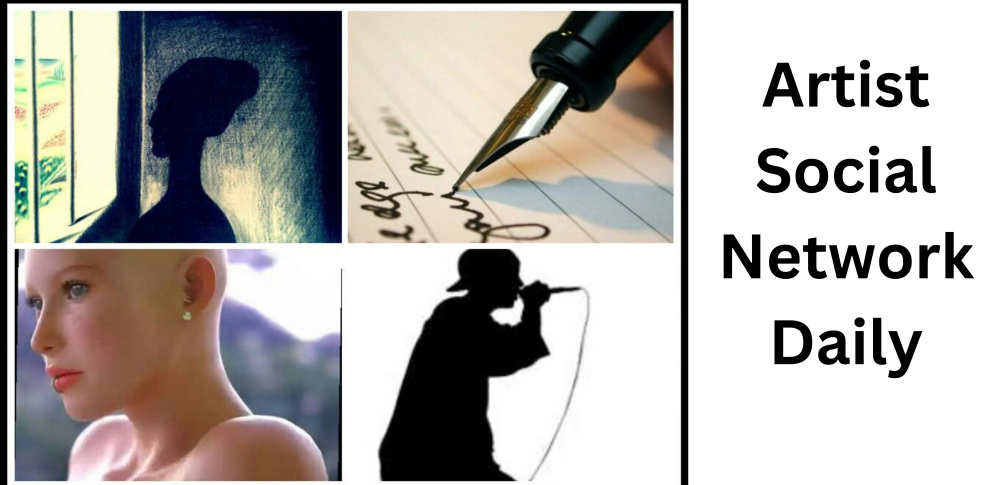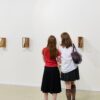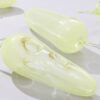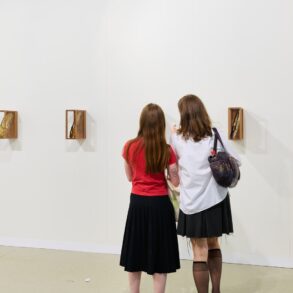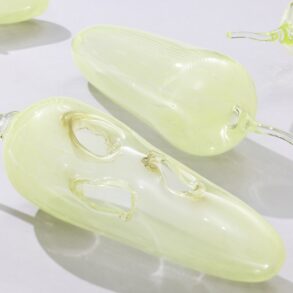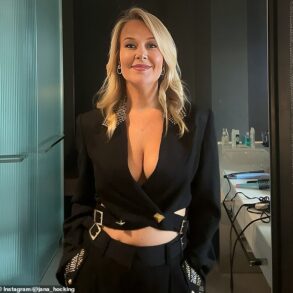Apr 18, 2025 —
A new exhibition in Plattsburgh spotlights women artists.
“The World Is Her Canvas” opens today at the Strand Center for the Arts with an opening reception from 5 to 8 p.m. It features the work of eight women from around the region: Michelle Vara, Sarah Ashe, Alise Babbie, Zoe Bedell, Kt Falzetta (Dear Simon Photography), Valerie Hird, Susan Hoffer and Eve Petrashune.
Elsa Koop-Angelicola is the Strand’s gallery and events manager, and the curator of “The World Is Her Canvas.” She wants to send a message with this new exhibition.
“Women in the arts are very powerful and their talents are limitless.”
Art pieces “like children”
Koop-Angelicola hand-selected the eight women artists and their artwork for the show. She says each of them brings a variety of things to the table.
“It’s all different styles, mediums, backgrounds, educations — ages of the artists. It’s a very wide range so there’ll be a lot of different artwork on display in the gallery.”

Michelle Vara of the Ballard Road Art Studio Gallery in Wilton stands amid a selection of her multimedia sculptures. Photo: Cara Chapman
Among them are a fiber artist, two painters, two photographers and three sculptors. Michelle Vara of Wilton is one of the sculptors and identifies as a multimedia artist. She says she was born that way.
“My interests really, really vary,” she explains. “So when your interest varies, your medium has to match the interest.”
For Vara, that can mean using reclaimed metals, crocheted material, glass beads and paint all in the same piece.
And a lot of work goes into each one: drawings, research, collecting the materials. Some take a year to create from concept to finished piece.
Vara says she doesn’t have any favorites.
“They’re like children — you’re trying to raise them to be the best that they can be and they’re put together and when they’re finished, they go out into the world and they make their own comment or impression.”
A woman welder
Vara says being a woman doesn’t tend to come into play with her art, but she remembers how it made her stand out years ago.
“Back in the day, a woman welder was really a curious sight and a strange place to be,” she says. “That’s long gone, of course. There’s women doing everything.”
Vara first learned to weld the hard way, by trial and error.
“And then I decided that I wanted to be certified so that way no one could say, ‘They’re not structurally sound,’ because a lot of my work is very large,” she says. “I wanted to be sure that my welds were technically correct and I understood what I was doing. So I went to school for it at some point.”
Mostly for her art. Vara tried her hand at underwater welding and made it about three weeks before calling it quits.
The human spirit
Vara says she hopes that people who view her art in the gallery or who add it to their personal collections are stimulated by it.
“And if I did my job really well, each day that you live with it, it’ll be a little different and it’ll have a conversation to your ‘soul’ you, not to your ‘mind’ you,” she says. “Your ‘mind’ you should fall in secondary.
“The big picture is to stimulate the human spirit.”
And what does the “human spirit” mean for her?
“It’s the part of you that you don’t necessarily have words to put to,” Vara explains. “I believe that art speaks the language without words.”
Not just wallpaper
Sarah Ashe of Middlebury, Vt., also hopes her art stays dynamic for the viewer. She’s the exhibition’s fiber artist.
“My hope is that it doesn’t just hang on the wall and make wallpaper,” she says, “that it’s something that people are curious about and they may look at it and ask questions or maybe it inspires them to do something themselves. I like to think of it as a conversation and perhaps people will find things that they hadn’t seen before, they may acquire a piece and then really see something all new that they hadn’t thought was there or they’d known was there or maybe wasn’t there and they suddenly see it, put it there, whatever.”
Ashe started out in fiber arts in her younger years when she’d make her own clothes and artistic masks. Then, she went dormant for a while and focused on painting and drawing.
“And about four years ago, … right around COVID times, a group of us got together and we called ourselves the Feral Stitchers,” she says. “We began to explore stitchery and fabric and it just has grown.”
Ashe’s pieces are a mix of materials. She uses things people give her like upholstery samples, doilies and linens. She’s also drawn to blue and white Japanese cottons, with their fun patterns.
And sometimes, she makes her own supplies. She might paint dead hosta leaves or use them to make blue cyanotype prints. At the Strand gallery, Ashe points to one piece where she got creative with nails.
“This is a piece I did in the earlier days,” she says. “Here’s a doily. And then this is just an old piece of cheese cloth that we use. I took old rusty nails and wrapped them in cotton and then I put them in salt water and of course they stained the cotton and I just thought the pattern was just fabulous. And so then (I) sometimes try to echo that with the stitchery.”
The element of play
Ashe says creating the components she uses in her art is about playing around.
“Sometimes when you see what comes out of it, it gives you a sort of a jumping off place or an idea of what you want to do,” she explains. “It’s sort of an iterative process. You sort of almost talk to it and then it talks back to you and sometimes it tells you what to do and sometimes it doesn’t and it doesn’t work out.”
Ashe says play is an extremely important element when she’s making art.
“There’s this letting go, I think, when you’re playing. You’re not locked into something you have to create. It [doesn’t have to] turn out a certain way and there’s a kind of a a chance that you’ll maybe suddenly turn in a different direction and the piece that you thought you were going to make turns into something totally different.”
“The World Is Her Canvas” is open to the public during the Strand’s regular business hours through June 21st. An opening reception will take place from 5 to 8 p.m. tonight, Friday, April 18.
This post was originally published on this site be sure to check out more of their content
